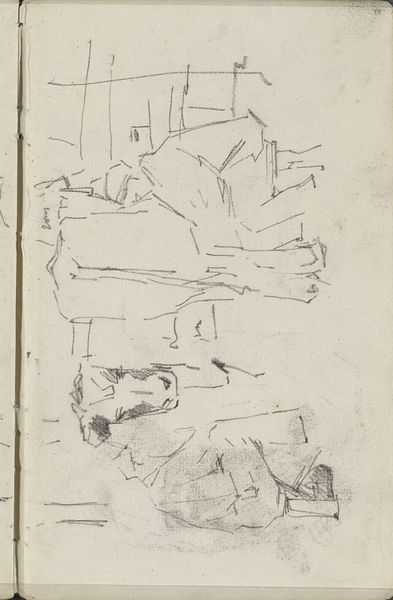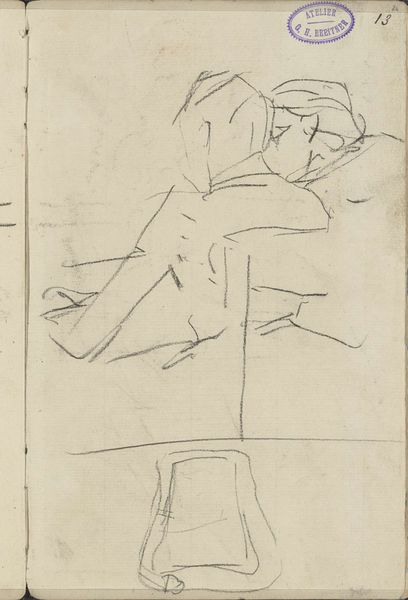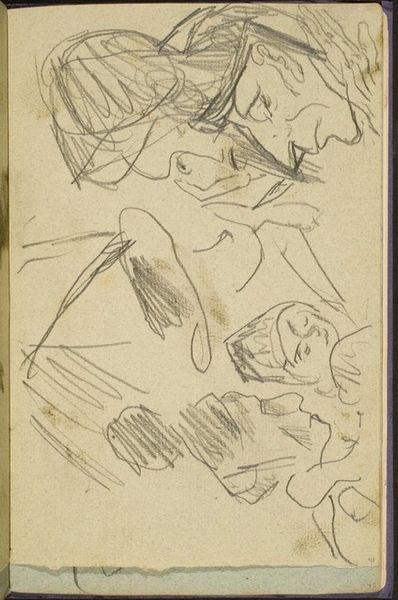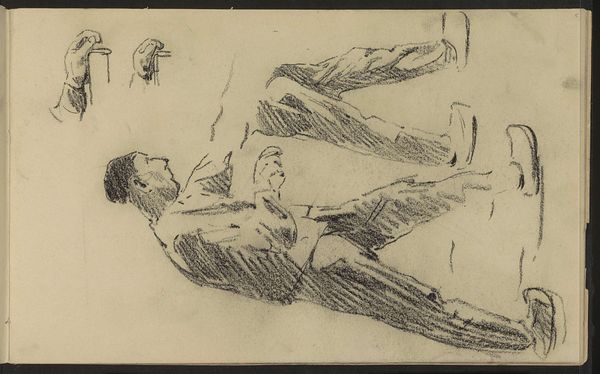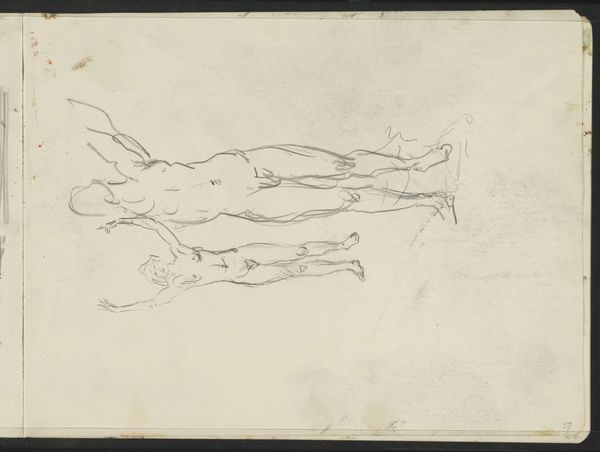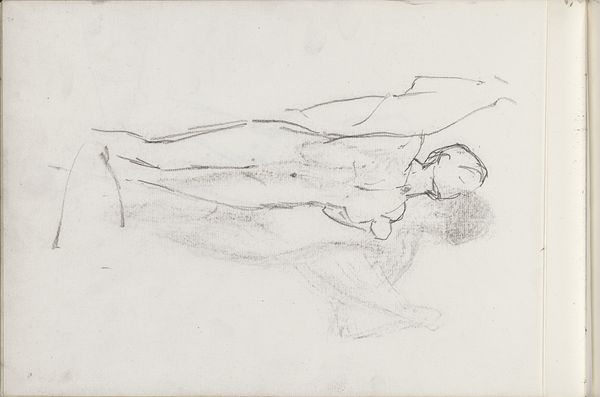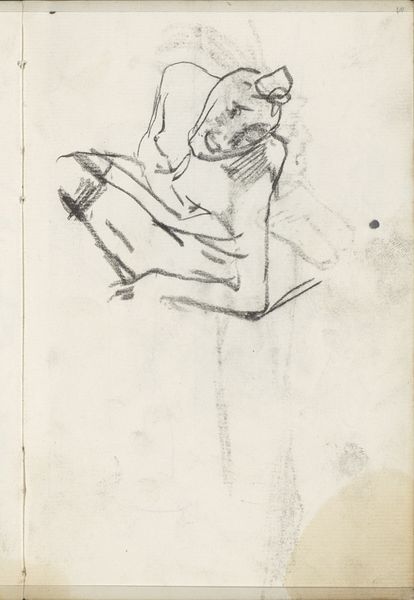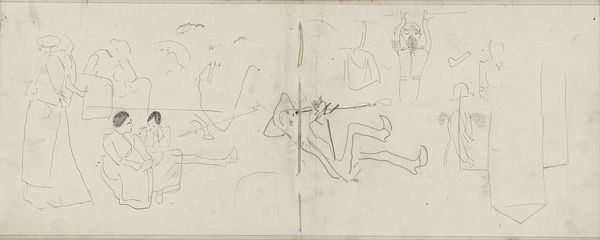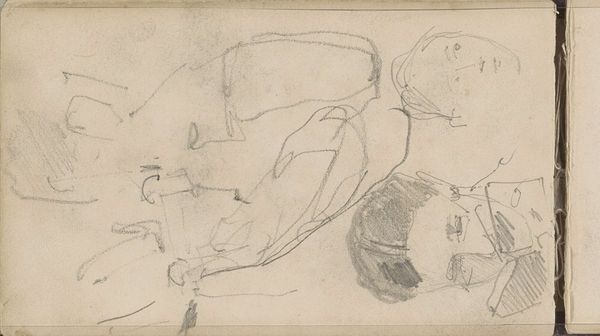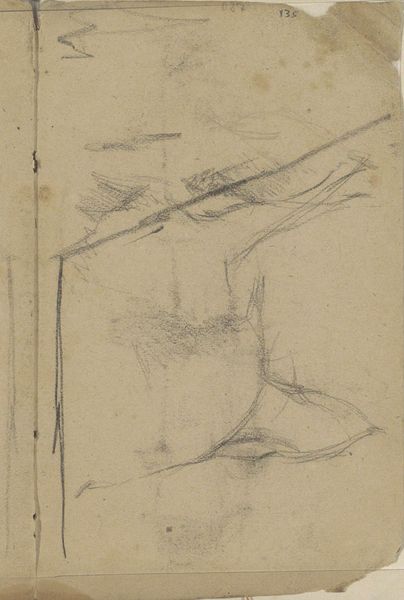
Copyright: Rijks Museum: Open Domain
Curator: Ah, I find this particular work so revealing. What we’re looking at is titled “Figuurstudies,” or “Figure Studies,” a page from a sketchbook by George Hendrik Breitner, dating from around 1886 to 1898. It’s pencil on paper, and part of the collection here at the Rijksmuseum. Editor: Wow, it’s got this really raw, almost frantic energy. Like catching a fleeting moment, a glimpse into someone's private thoughts jotted down quickly. It feels almost…unfinished. Curator: Exactly. Breitner's sketchbooks offer an intimate view into his artistic process, and into his social surroundings. He used these drawings, executed quickly, as preparation for larger works. These aren't posed studio drawings; these are observations from real life, studies from different social classes—snapshots of modern Dutch society in pencil. Editor: So he was out there, like, embedding himself to observe the working classes in daily situations? It's kind of voyeuristic. You can almost feel the graphite smudging as he quickly captures them! It does capture real emotion somehow in such little lines. The subject reclines vulnerably in two of the drafts at the top of the sketchbook page, contrasted against some bold angular strokes toward the bottom of the page. Curator: I find it's more about Breitner capturing the burgeoning realities of The Netherlands. And note the toned paper. He was acutely aware of the materiality of the sketch itself, and the paper sets the scene and context and allows certain details to shine, even in these rough sketches. How does the labor implicit in his technique relate to the labor represented in the figures themselves? These quick works are part and parcel of a whole system. Editor: Hmm. Good point! It makes you wonder what stories are behind these almost ghostly figures. What was life like for these people whom he captured in such transient moments? The incomplete and raw sketchwork does prompt some serious reflection and even reverence. Curator: Breitner blurred the lines between art and life, high and low, precious and disposable. That tension is key to understanding his process, and how it reflects a rapidly changing society at a particular historical and industrial moment. Editor: Okay, okay, you’ve definitely given me a fresh way of thinking about it! What seemed spontaneous is really loaded with deeper context. Very cool.
Comments
No comments
Be the first to comment and join the conversation on the ultimate creative platform.

